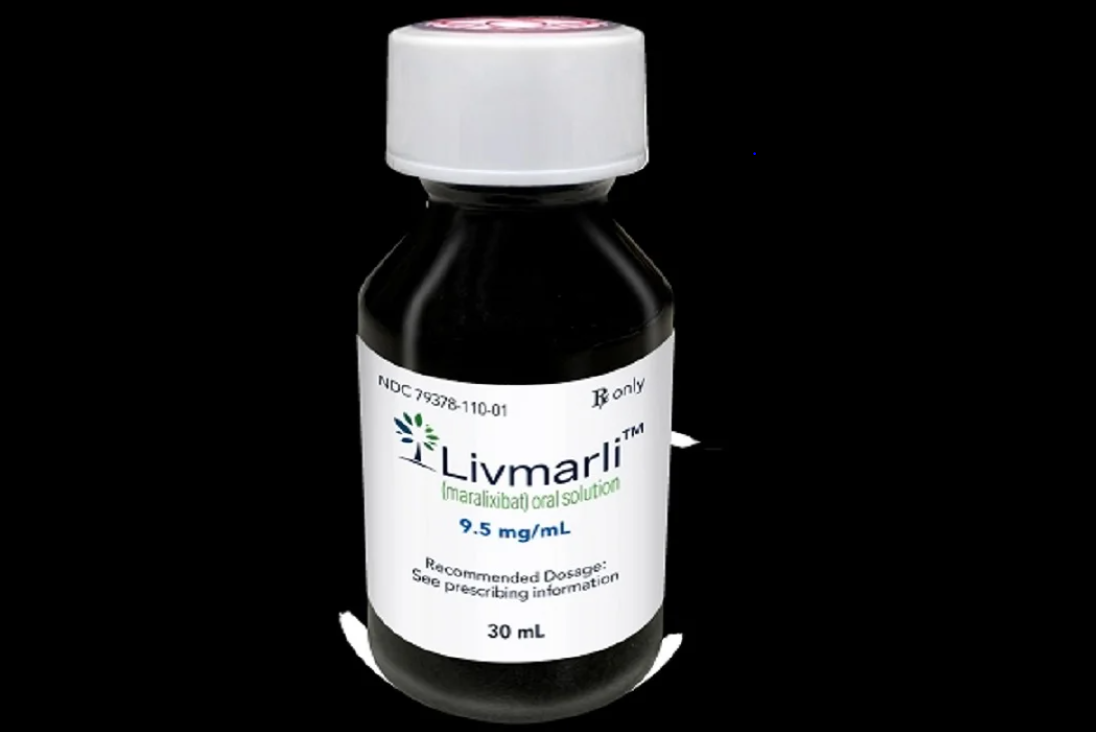Mirum scores 2nd FDA nod for rare liver disease drug Livmarli, this one to treat PFIC
2024-03-13
上市批准并购临床3期临床2期申请上市

Preview
来源: FiercePharma
Mirum Pharmaceuticals' Livmarli has now been approved to treat two rare liver diseases, progressive familial intrahepatic cholestasis and Alagille syndromeAlagille syndrome, matching the two FDA approvals Ipsen has for its similar treatment Bylvay.
With Livmarli sales reaching $142 million during its second full year on the market, Mirum Pharmaceuticals’ rare liver disease treatment is off to a solid start in fulfilling its blockbuster potential.
On Wednesday, the company took another step toward reaching that goal as it secured an FDA approval for Livmarli to treat cholestatic pruritus in patients ages 5 and older with progressive familial intrahepatic cholestasis (PFIC).
Combined with an FDA green light in 2021 to treat cholestatic pruritus in patients ages 3 months and older with Alagille syndromeAlagille syndrome (ALGS), Livmarli (maralixibat) is now available to patients with two of the three rare pediatric liver diseases that cause pruritus, the intense itch that accompanies the genetic disorders.
“When we started out, we had this really intriguing data on PFIC with some kids that did really well,” CEO Chris Peetz said in an interview with Fierce Pharma. “It feels good to get to the finish line for one of the key things we set out to do when we founded and started Mirum.”
Founded in 2018, Mirum acquired the rights to maralixibat from Shire that same year. Shire, for its part, acquired the drug through its Lumena buyout in 2014. A decade ago, the drug was tipped as a potential blockbuster when Shire paid $260 million up front for the medicine.
Now, the FDA approval gives Foster City, California-based Mirum a potential edge in its PFIC market rivalry with Ipsen. While Ipsen’s drug Bylvay (odevixibat) was approved in 2021 for PFIC and can be given to children as young as 3 months old, Livmarli’s approval is for a higher dose, which provides superior itch relief and bile acid clearance from the liver.
“(It) comes with a great response rate and depth of response for PFIC patients,” Peetz said. “It’s a great new treatment alternative for patients that either aren’t responding or aren’t being fully controlled with current therapies."
The next order of business for Mirum is to secure a label expansion to treat younger PFIC patients with Livmarli. The company has submitted a supplemental new drug application to introduce a higher concentration formula of Livmarli, which was used on some patients during the phase 3 MARCH study that paved the way for the PFIC approval. Peetz expects that green light to come later this year.
PFIC and ALGS cause a buildup of bile acid in the liver, requiring patients to undergo transplants to stay alive. Life expectancy is shorter with PFIC, with only 50% of patients making it past age 10.
Livmarli and Bylvay are both ileal bile acid transporter (iBAT) inhibitors which are taken orally. They are the only treatments approved for PFIC and ALGS, and that's expected to remain the case for years. Products in the works by potential competitors remain in early stages of development.
Bylvay was developed by AstraZeneca spinout Albireo, which was bought out by Ipsen for $952 million in January of last year. Bylvay sales reached $73.8 million for the final 10 months of the year, after the Ipsen acquisition was closed.
As for competition in the third pediatric liver disease which causes pruritis, biliary atresia (BA), Ipsen is in phase 3 testing while Mirum has struggled in phase 2. In December, the company revealed the failure of the EMBARK trial in which Livmarli came up short in all primary and secondary endpoints following Kasai surgery in babies between the ages of 21 and 90 days old.
The procedure for BA patients removes diseased bile ducts at the base of the liver and re-establishes bile flow using a portion of the intestine.
“What the study showed in both groups (Livmarli and placebo) is the surgery works really well when it works, so you’re not really adding much,” Peetz explained.
Mirum has another iBAT inhibitoriBAT inhibitor in the early stages of development in volixibat. The drug has shown “great precedent data,” in reducing bile acid Peetz said.
In July of last year, Mirum acquired two approved bile acid drugs from Travere Therapeutics, ponying up $210 million upfront and $235 million in potential milestones for Cholbam and Chenodal. The drugs combined for sales of $103 million in 2022.
更多内容,请访问原始网站
文中所述内容并不反映新药情报库及其所属公司任何意见及观点,如有版权侵扰或错误之处,请及时联系我们,我们会在24小时内配合处理。
适应症
靶点
药物
立即开始免费试用!
智慧芽新药情报库是智慧芽专为生命科学人士构建的基于AI的创新药情报平台,助您全方位提升您的研发与决策效率。
立即开始数据试用!
智慧芽新药库数据也通过智慧芽数据服务平台,以API或者数据包形式对外开放,助您更加充分利用智慧芽新药情报信息。




